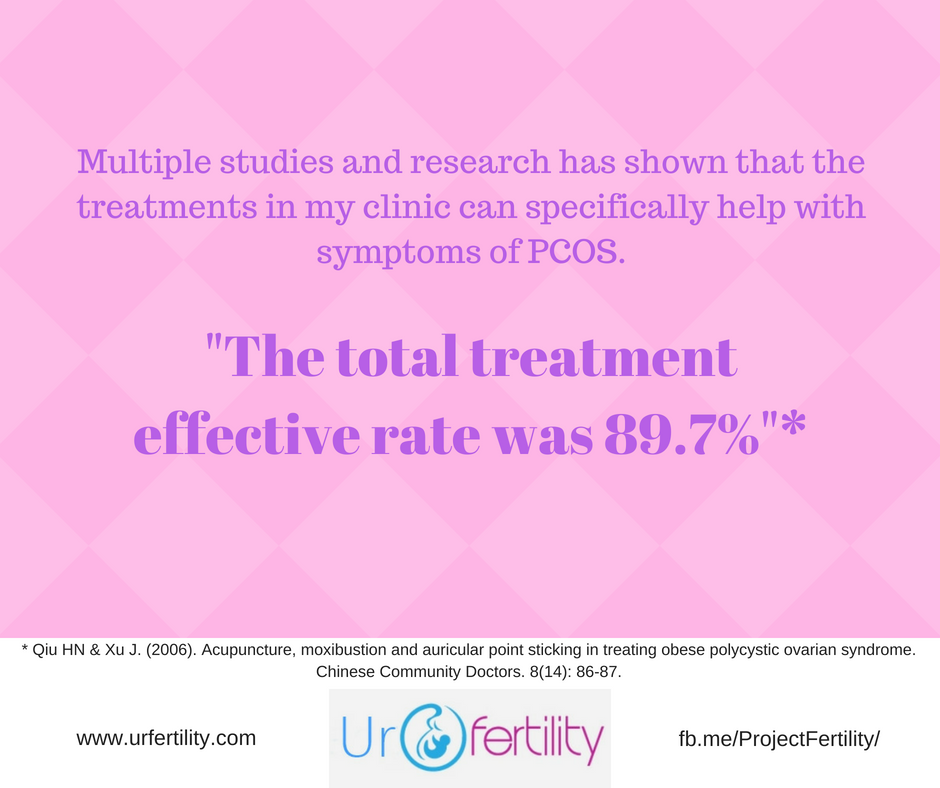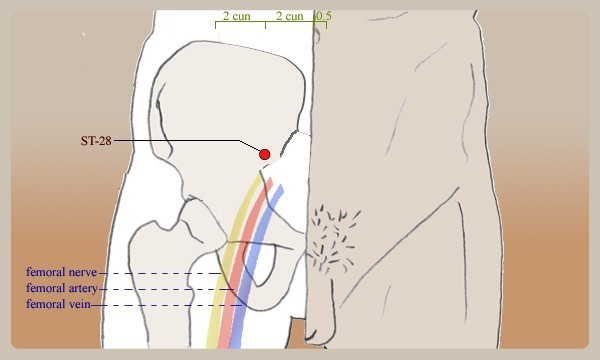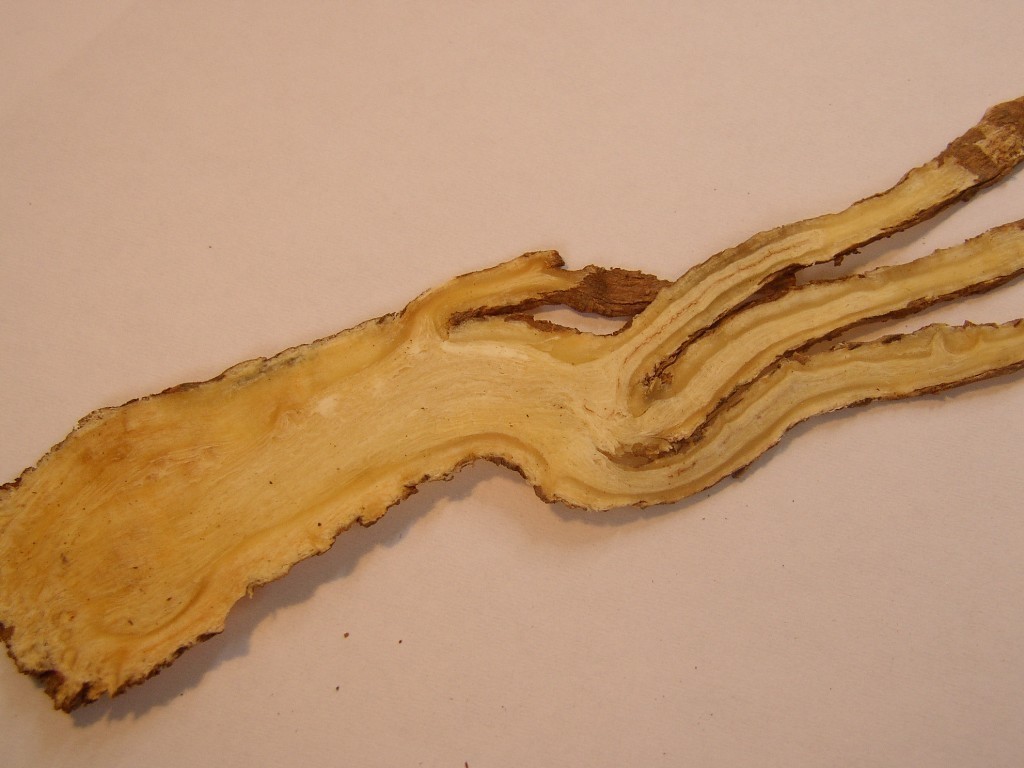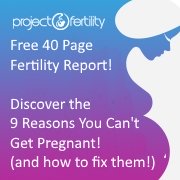PCOS and Infertility
How to Fix Your Fertility and Get Pregnant
By Paul J.O'Brien B.A., N.C.E.H.S., Dip. Acu., Adv. Dip. OBB, Cert Clin. Med, Cert.CHM, Pn1, PN-SSR, PN-NCA, M.AFPA, M.ETCMA, M.C.Th.A.
 PCOS and Infertility CAN be fixed!
PCOS and Infertility CAN be fixed!PCOS and Infertility is one of the most common presentations in my clinic and the bane of many women. PCOS (Polycystic Ovarian Syndrome) is one of the leading causes of infertility due to its inherent nature of hormonal imbalance. From a Western perspective this is often seen as a genetic issue and can usually be traced back several generations, particularly when there is a family history of diabetes or high blood pressure. In this article, I am going to give you a complete breakdown of how PCOS and infertility present, why it happens and most importantly the steps you can take to fix PCOS and Infertility and get pregnant!
PCOS Awareness - What Exactly is PCOS?
First diagnosed in the 1930's as Stein-Leventhal Syndrome, polycystic ovary syndrome or PCOS is a prevalent condition affecting adolescent girls and young women. PCOS results in the development of many (Poly) masses called cysts (cystic) developing on the ovaries. These cysts are actually egg-containing follicles that have failed to mature a healthy egg and instead have become clumped masses. The cysts themselves aren't dangerous but can steal blood and hormones away from the healthy follicles preventing regular ovulation or in some cases any ovulation. Obviously this can lead to infertility.
The Causes of PCOS
While a genetic link is suspected, Western medicine really doesn't know why PCOS and Infertility develops (we do in TCM, but I'll come to that in a moment). Despite not understanding why, Western Medicine does understand that both male and female bodies produce sex hormones in different amounts. In females, the ovaries produce three kinds of hormones namely, progesterone, estrogen, and androgen. These hormones regulate the female cycle from ovulation to menstruation. However, in women affected by PCOS and infertility, the ovaries produce higher amounts of androgens which are sometimes referred to as “male hormones" such as raised levels of luteinising hormone (LH) and male sex hormones like testosterone (which causes bad skin, and excess body hair). These elevations can reduce FSH and progesterone, needed to hold on to developing pregnancy.
The imbalance caused by the excess androgens interfere in the development of the egg cells and their release. Some eggs do not mature but instead develop into little sacs filled with liquid called cysts. Since no eggs are released during ovulation, these cysts enlarge and build up inside the ovaries, causing missed or irregular periods.
PCOS Weight Gain
PCOS is also known to cause insulin resistance, which in turn leads to greater amounts of insulin being released to aid the breakdown of sugar in the body. This leads to excess weight, but worse still for fertility, again increases testosterone which when mixed with raised insulin levels interferes with ovulation...and that excess body fat triggers the release of more insulin leading to vicious cycle of infertility and hormonal imbalance. But it doesn't have to be that way. There are clear cut steps that can be taken to resolve this...before we get to that, let's take a look at the common symptoms and tests for PCOS and Infertility.
Common PCOS Symptoms
The signs and symptoms of PCOS may vary from woman to woman so regular checkups with a gynecologist is a must for proper diagnosis. Below are some symptoms usually caused by PCOS:
- irregular or missed periods
- heavy periods that come more than once in a month
- obesity
- hirsutism – excess facial and body hair
- alopecia – thinning hair on the head
- thickened and dark skin on armpits, neck, and breasts
- high blood pressure, high blood sugar level, or high levels of cholesterol
- clogged pores and acne
If you display 2 or more of the above symptoms you may have PCOS and should get examined. Some of these symptoms can be very serious, leading to heart disease, diabetes, high blood pressure, and endometrial cancer.
The following PCOS Tests are the most commonly used to diagnose the problem.
PCOS Tests
Diagnosis for PCOS and infertility usually comes in three stages in order to eliminate other probable conditions that may have caused the symptoms. First up is a discussion of medical history to determine whether there are past medical and health conditions that can be linked to PCOS. After this, a physical examination is conducted to check for symptoms like excess weight, darkened skin, and blood sugar and cholesterol levels. A gynecologic exam is done last to check for other probable infections which may have caused the symptoms.
After that there are three main PCOS and infertility tests that are generally conducted. The first two are blood tests, the third being a scan.
PCOS Test No.1: Luteinizing Hormone Test
LH stands for Luteinizing Hormone. This hormone triggers ovulation and development of the corpus luteum (3). This is test taken cycle Day 2-5. What they are looking for are indicators of PCOS (Polycystic Ovarian Syndrome) or DOR (Diminished Ovarian Reserve). The range is as follows:
- Normal range = 1.4 - 7.8 IU/L (1.4 - 7.8 mlU/mL)
If the LH is High AND there is a Normal FSH level, this can indicate the presence of PCOS....but they can’t be sure and would need to run a specific test for PCOS which is test No.2.
If the LH is High AND there is a HIGH FSH level, this can indicate DOR (Diminished Ovarian Reserve).
Don’t worry, I’m going to tell you EXACTLY what to do next to fix any or all of these results if they haven’t come back right.
PCOS Test No.2: Anti-Müllerian Hormone Test
Anti-Müllerian hormone (AMH) is a hormone produced in the granulosa cells of the primary, preantral and small antral follicles in women. The higher the number of these early follicles (that house and develop the eggs) the higher the AMH level. Given this, AMH is present in the ovaries until menopause(???). AMH is fairly stable and can be tested for by blood test on any day of the cycle.
Western fertility clinics use AMH to determine ovarian reserve(???). It’s a little more accurate than FSH, but to be honest not as accurate as AFC (which we’ll talk about in a moment).
Incidentally, AMH can also be used as a marker for ovarian dysfunctions, such as in women with polycystic ovary syndrome (PCOS). This is evidenced by high values of AMH (>48 pmol/L or >6.7 ng/mL) .
Low values of AMH (<1.5-5.0 pmol/L or 0.2-0.7 ng/mL DSL Enzyme-linked Immunosorbent Assay (ELISA)) have indicated a high predictability of poor ovarian response (<3 follicles or ≤ 2-4 retrieved eggs). Again, don’t worry about this - plenty of women have gone on to become pregnant with the correct stimulation(???).
AMH naturally and normally reduces with age, and this needs to be accounted for when looking at the levels and tests results. The ranges are as follows, though keep in mind different clinics have different standards:
- < (less than )1.4-5 pmol/L (<0.2-0.7 ng/mL DSL ELISA) = Low ovarian response (poor embryo quality, low pregnancy) .
- ≤ (less than, equal to) 5.3 pmol/L (≤0.7 ng/mL) = likely Low ovarian response
- ≥ (greater than, equal to) 25.0 pmol/L (≥ 3.5 ng/mL) = likely high ovarian response
- > (greater than) 48 pmol/L (> 6.7 ng/mL) = likely indicates PCOS and Infertility.
A higher level of anti-Müllerian hormone (AMH) has been found to have a positive correlation with natural fertility in women aged 30–44 aiming to conceive spontaneously, even after adjusting for age. However, this correlation was not found in a comparable study of younger women (aged 20 to 35 years) .
Interestingly, AMH levels can be used to predict an excessive response in ovarian hyperstimulation with a sensitivity and specificity of 82% and 76%, respectively .
As noted, however, it’s not a great predictor of ovarian reserve and can be affected by something as simple in your diet as fish oils and Vitamin D .
PCOS Test No.3: Ultrasound
The particular type of ultrasound scan done for women suspected of having PCOS and infertility is more correctly called Transvaginal Ultrasonography. The goal of the ultrasound is to determine adverse uterine problems, like:
- Myomas: Myomas are benign tumors partly made of muscle tissue. They seldom develop in the cervix, the lower part of the uterus. When they do, they are usually accompanied by myomas in the larger upper part of the uterus. Myomas in this part of the uterus are also called fibroids. However, these are much better discovered through a hysteroscopy, which I’ll cover in a moment (4).
- Cysts and Endometriomas: Endometriomas are a cystic mass arising from ectopic endometrial tissue within the ovary. They contains thick, brown, tar-like fluid, which may be referred to as a "chocolate cyst." These cysts stick to the surrounding structures, such as the peritoneum, fallopian tubes, and bowel (5).
- Hydrosalpinges: This is is a condition where a blockage of one of the fallopian tubes may lead to a build up of fluid in fimbrial end of the tube (the side closest to the ovary). That fluid gathers having no ability to drain away (a condition called hydrosalpinx) and can flood the uterus, washing away fertilized eggs that have been implanted naturally or via IVF.
Finally, an ultrasound can be very useful for monitoring the follicles and endometrial lining during ovulation stimulation and induction (6). This would be typically done for follicle tracking and ovulation timing for Timed Intercourse in ART treatments.
Chinese Medicine and PCOS
Traditional Chinese Medicine is a little bit more detailed when diagnosing PCOS and infertility and has a clear understanding of HOW and WHY PCOS develops.
Traditional Chinese Medicine (TCM) focuses on all of the major organs of the body working as an interconnected network. This means, for example, that the function of your kidneys can have a direct impact on the function of your lungs. It is this interrelation in TCM that gives it its holistic basis.
A detailed overview of how we diagnose PCOS and infertility in Traditional Chinese Medicine, along with a complete overview of how to fix it (including methods such as self message, spinal mobility, self myofascial release, herbs, nutrition etc) is far beyond the scope of this article (I do teach all of this and more in my full coaching program, “PCOS Free: A Complete Program to Preventing PCOS, Perfecting Your Periods and Protecting Your Natural Fertility”)...however...I want you to be able to take immediate action.
In TCM there are 4 primary possible diagnosis for PCOS and about 32 other secondary patterns. Those top four are:
- Dampness in the Lower Jiao leading to Phlegm Damp
- Blood Stasis
- Qi and Blood Deficiency
- Kidney Yin Vacuity
Those are funny sounding names, I know, but they do make complete sense once explained. And once you have the right diagnosis you can apply the right treatment.
Okay...so How Do You Fix PCOS and Infertility?
Multiple studies and research has shown that the treatments in my clinic can specifically help with symptoms of PCOS. A study published in the Shanghai Journal of Acupuncture reviewed the work of Wang et al. That study demonstrated an 80.8% total effective rate for the treatment of polycystic ovarian syndrome (1). Another study, study conducted by Qiu HN & Xu J. showed "The total treatment effective rate was 89.7%".
Multiple studies conducted by Lim 2010; Stener-Victorin 2009; Feng 2009; Manneras 2009 show that treatment impacts beta-endorphin production, which may affect gonadotropin-releasing hormone (GnRH) secretion, and has a regulatory effect on follicle stimulating hormone (FSH), luteinising hormone ( LH) and androgens (Lim 2010; Feng 2009). Other studies such as Stener-Victorin 2006, 2009, show a modulation of the activity of the sympathetic nervous system and improving blood flow to the ovaries.
We also have detailed studies showing dramatic improvement of steroid hormone/peptide receptors regulation (Feng 2012); on the downregulation of the expressions of serum levels of testosterone and oestradiol (Zang 2009); the control of hyperglycaemia through increasing insulin sensitivity and decreasing blood glucose and insulin levels (Lim 2010); increasing the release of adenosine, which has antinociceptive properties (Goldman 2010) and acting on areas of the brain known to dampen sensitivity to pain and stress, as well as promoting increased relaxation and deactivating the ‘analytical’ brain, which is responsible for anxiety and worry (Hui 2010; Hui 2009); and finally reducing inflammation, by promoting release of vascular and immunomodulatory factors (Kavoussi 2007).
All of which is to say...
Using a variety of natural techniques we can
- Increase blood flow and circulation of the ovaries to enhance follicle and egg health,
- Prevent the development of cysts,
- Breakdown cysts already present and
- Balance out hormones like oestrogen, testosterone, FSH, AMH, insulin and more.
Treatment for PCOS and Infertility
In my treatment plans for fixing PCOS and Infertility, I work with my patients in the clinic and online to:
- Balance their Spine and Hips (to prevent problems with blood flow and circulation to the ovaries)
- Unblock their organs (to make sure they can make and supply the right blood and hormones)
- Self Massage of the Lymphatic System (to keep out toxins and hormonal imbalance)
- Acupuncture/Acupressure (to supercharge the nervous system and balance blood and hormones, breakdown cysts and regulate the period, accelerate the metabolism and lose weight)
- PCOS Diet Plans (to rapidly repair hormonal balance, stabilize insulin, reduce testosterone and lose weight fast!)
- PCOS Herbal Medicine (to increase energy, reduce weight, boost hormonal balance, regulate the blood, breakdown cysts and masses)
- PCOS Stress busting methods (to clear cortisol ,the stress hormone and prevent weight gain, and hormonal imbalance)
- PCOS Busting Exercise! (Certain exercise programs can make PCOS WORSE, but the right exercise can make a rapid difference to your hormone balance and weight loss!)
Let's look at some examples that you can apply to treat PCOS and Infertility right now!
Acupuncture PCOS and Infertility Points
 ST-28 Acupuncture PCOS
ST-28 Acupuncture PCOSSt-28 is a wonderful point for treating PCOS and infertility.
It is located at 3 thumb widths below the belly button and 2 thumb widths to the side.
We often use it to regulate the period and alleviate any pain.
Because of its association with the lower organs it is also used to treat retention of urine and faeces, oedema, cold in the bladder, distention and fullness of the lower abdomen, pain in women extending to the genitals, dysmenorrhoea (painful periods), infertility, cold in the uterus that radiates down the thigh to the knee, uterine masses (fibroids, PCOS, polyps), and lumbar pain (back pain) during the period!
Herbs for PCOS - Dang Gui
 Dang Gui, a Herb for PCOS
Dang Gui, a Herb for PCOSTraditionally Dang Gui is used to nourish the blood and regulate menstruation. It is often included in Blood Deficiency disorders like PCOS and Infertility, characterized by pale complexion, blurred vision, palpitations, amenorrhea (no periods), dysmenorrhea (painful periods) and PCOS.
Dang Gui vitalizes and harmonizes the blood, and stops pain due to stagnant blood as such it treats abdominal pain, traumatic injuries, and hematoma. It harmonizes the Ren and Chong (The Conception Vessel and Governing Vessel), two nerves passing through the uterus and reproductive centres.
Well, first, never take herbs in isolation or without the supervision of qualified herbalist like me.
As for Dang Gui you can boil the roots, slice it into food or grind it into powder and take it as a tea. The minimum dosage is 3 grams and the maximum is 15 grams per day.
BUT BE CAREFUL!
This herb may have negative interactions with anticoagulant or antiplatelet drugs. There is a suggestion that concurrent use of this herb and warfarin may increase the effect of warfarin. In one in vitro study, it was discovered that Dang Gui significantly lowered prothrombin time values when given concurrently with warfarin. It has also been shown that this herb treats acetaminophen-induced liver damage.
PCOS Diet Help
PCOS Diet Help is an essential part of PCOS and infertility treatment. Annoyingly, different symptoms respond to different dietary moves, and some of these changes can be contradictory. Which is why the correct PCOS Diet help is so important. Because we can very accurately diagnose the underlying cause of PCOS through Chinese Medicine, we can provide very detailed PCOS Diet help and a PCOS diet menu, specific to the patients needs.
In general, eating fewer simple sugars, avoiding foods that you are allergic or intolerant to, and eating many vitamins and minerals strengthens your immune system, which means your body has fewer reasons to be stressed and reduces the symptoms of PCOS.
So, What is Your Next Best Step to Fix PCOS and Infertility?
Pick up a copy of my complete PCOS Coursebook. This 200-page guide answers all your PCOS questions. I will take you by the hand and walk you through a simple 11-Step process to PUT PCOS IN YOUR PAST.
I'll teach you:
- Simple home massage techniques to clear the lymphatic system
- Easy access pressure points that trigger hormonal balance
- Why Salads and other “health foods” could be the worst things imaginable for your PCOS
- Specific, delicious foods that actually heal each pattern rather than harm it
- How to prepare herbal teas to balance hormones, keep your skin clear and beautiful, regulate your menstrual cycle and enhance your natural fertility
- Exactly what to do EACH DAY for 4 weeks
- How to perform a short exercise routine (less than 4 minutes) that melts PCOS fat from the body (the wrong type of exercise will trigger PCOS hormone nightmares!!!)
- How to clear stress from the mind, body and heart.
- And so much more.
Click here to learn more - PUT PCOS IN YOUR PAST
References
(1) Wang XY, Zhang YJ, Wu FD, Lu Y & Huang GQ. (2007). Acupuncture Treatment for 26 Cases of Polycystic Ovary Syndrome. Journal of acupuncture, moxibustion & Tuina. (05)
(2) Qiu HN & Xu J. (2006). Acupuncture, moxibustion and auricular point sticking in treating obese polycystic ovarian syndrome. Chinese Community Doctors. 8(14): 86-87.
(3) Physiology: 5/5ch9/s5ch9_5 - Essentials of Human Physiology
(4) Practice Committee of American Society for Reproductive Medicine. Diagnostic evaluation of the infertile female: a committee opinion. Fertil Steril 2012;98:302-7.
(5) Ibid.
(6) Saunders RD, Shwayder JM, Nakajima ST. Current methods of tubal patency assessment. Fertil Steril 2011;95:2171-9.





New! Comments
Have your say about what you just read! Leave me a comment in the box below.